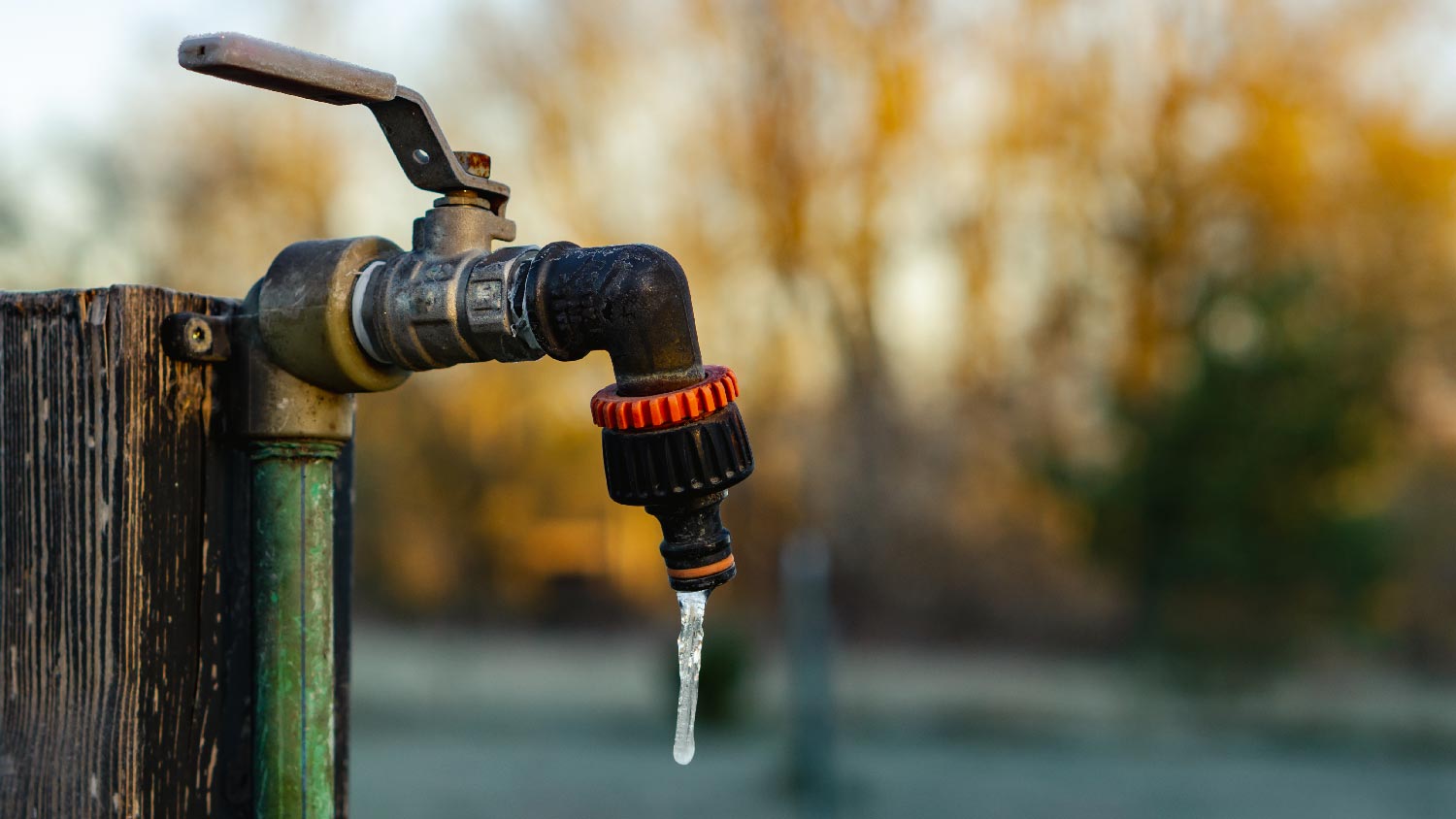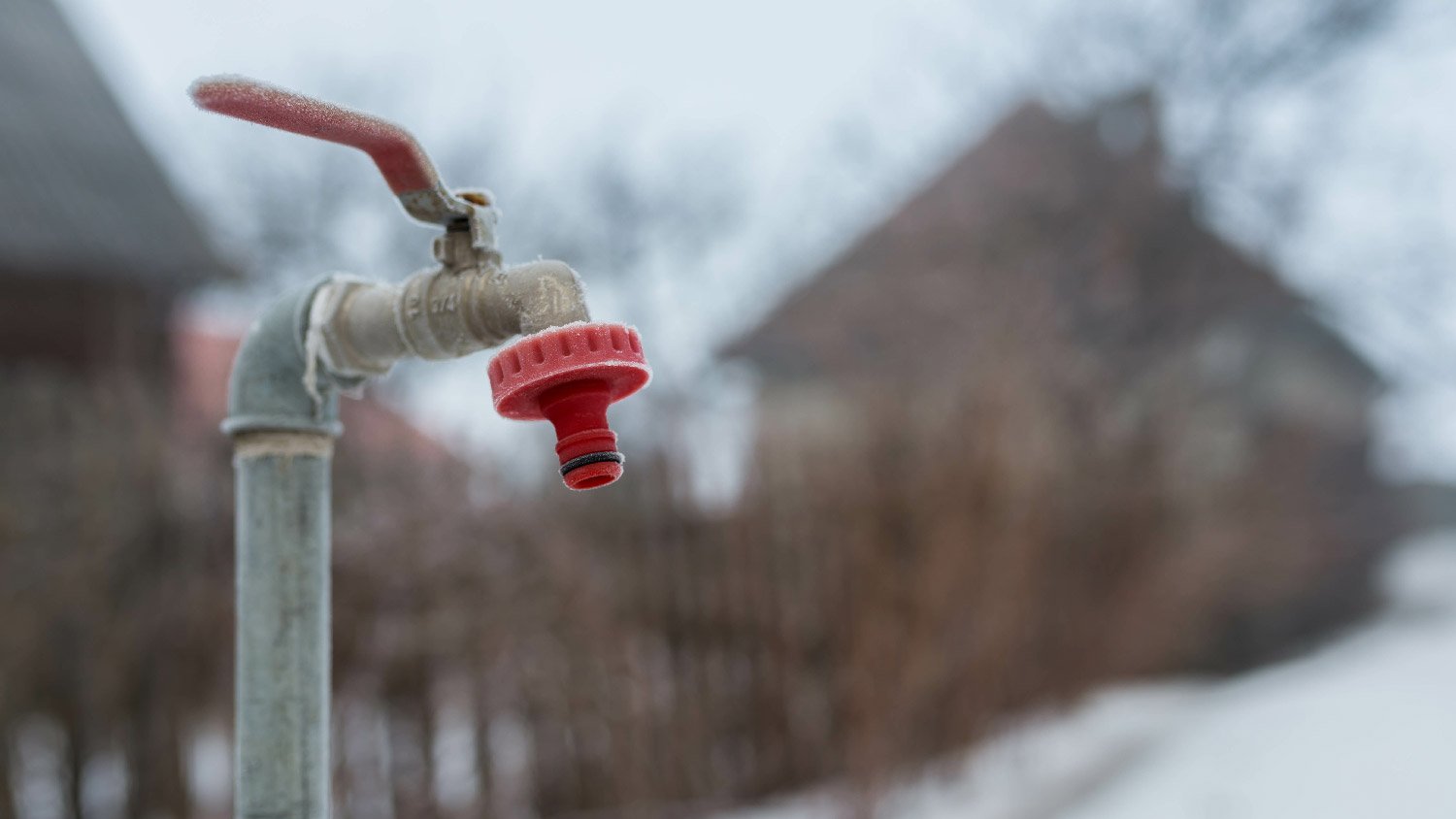
The average cost to replace a bathroom faucet typically ranges from $170 to $360. Faucet installation costs often vary based on the selected fixture hardware.
Don’t let winter give your watering dreams the cold shoulder


Frost-free hose bibs are better at preventing frozen pipes in winter.
Water shut-offs are located outside the home’s exterior wall with regular hose bibs.
Frost-free hose bibs extend the water shut-off valve to the interior of the home.
Regular hose bibs are more affordable and easier to install yourself.
Professional aid may be necessary to install a frost-free hose bib.
When it comes to outdoor faucets, choosing between a frost-free hose bib versus a regular hose bib can be a crucial decision. This is particularly true if you live in an area with freezing temperatures. Both options have their advantages and disadvantages, and understanding the differences between these two types of exterior faucets can help you make an informed choice. That’s why we’re going to break down the distinctions between the two and help you get a better idea of which one may be the right fit for your needs.
You should winterize your pipes before temperatures regularly drop to 32 degrees Fahrenheit. Depending on where you live, this could start as early as September.
A frost-free hose bib, also known as a frost-proof or freeze-proof hose bib, and a regular hose bib serve the same fundamental purpose—providing an outdoor water source for your home.
These two types of hose bibs differ significantly in their design, though, with a frost-free hose bib built in a way that better prevents freezing pipes. Regular hose bibs don’t have any mechanism to prevent your pipes from freezing (which typically makes them less expensive). Frost-free hose bibs may also be more difficult to install and aren’t typically DIYable.

A standard hose bib, sometimes referred to as a traditional or regular hose bib, is a common fixture on the exterior of many homes. It’s a simple outdoor faucet that allows you to attach a hose for various outdoor tasks, such as cleaning driveways or watering gardens. The hose bib is connected to your home’s water pipe system, and its spigot is typically located on the side or back of the home on an exterior wall.
Standard hose bibs consist of a valve mechanism that, when turned on, allows pressurized water to flow through a spout. When the valve is turned off, it stops the flow of water, preventing any further discharge. The shut-off for regular hose bibs sits close to the outdoor spigot and falls outside of the home’s exterior walls. This means that any remaining water in the connecting pipe is exposed to freezing temperatures in the winter.
| Pros | Cons |
|---|---|
| Budget-friendly | Prone to freezing |
| Easy to install | Can cause leaks |
| Ideal in mild climates | Not ideal in freezing temps |
Best for:
Homes in regions with mild winters
Those who need an affordable outdoor water source solution
Home maintenance beginners who want to DIY the project
The most prominent advantage of regular hose bibs is that they’re the more affordable option for those who need to keep their project budget-friendly. Installing a regular hose bib is also an easy and straightforward process, particularly if you’re replacing an existing standard hose bib. These outdoor faucets work perfectly fine in areas with mild winters.
On the flip side, there are a few disadvantages to be aware of when it comes to standard outdoor faucets. The most important drawback to consider is that they are prone to freezing, leaks, and other damage during cold winter months. If you live in a region that experiences freezing temperatures, a regular bib may not be the best choice.

As far as the two main types of hose bibs go, frost-free options have the same functionality as regular hose bibs, but frost-free bibs are, unsurprisingly, designed as freeze-proof faucets to prevent pipe bursts in cold weather. This makes frost-free bibs a valuable addition to homes in areas prone to freezing temperatures.
Frost-free hose bibs work on the principle of keeping any excess water inside the home’s perimeter, where it’s warmer. These outdoor faucets are designed with a long stem that extends into the interior of a building. The shut-off is located at the inside end of the long stem, so any remaining water sits in the indoor portion of the plumbing, where it's less likely to freeze. However, proper installation and regular maintenance are still essential to ensure a frost-free hose bib's functionality.
| Pros | Cons |
|---|---|
| Prevent freezing pipes | More expensive |
| Less intensive winterization process | Harder to DIY |
| Ideal in cold climates | May require professional installation |
Best for:
Homes in regions with freezing weather
Busy individuals who don't have time for winterizing tasks
Those who can spend some extra cash to hire a pro
The biggest and most obvious benefit of frost-free hose bibs is that they are better at preventing freezing pipes in the winter as well as the resulting leaks and water damage that they cause. That’s why this type of outdoor faucet is preferred in regions where winter temperatures fall below freezing.
Frost-free hose bibs also require less intensive winterization in order to prevent freezing pipes. This means that if you don’t have time to tick off all the boxes on your winter home safety checklist, you have an added layer of protection against bursting pipes.
A significant drawback of frost-free hose bibs is the cost. Not only is the outdoor faucet itself a bit more expensive, but installation is often a bit trickier. That’s because, in order to install a frost-free outdoor faucet, it’s sometimes necessary to cut and solder pipes back together to make room for the extended length of the stem indoors. This means that it’s very likely that you’ll need the help of a plumber near you to install your new outdoor faucet.

Let's take a closer look at both regular and frost-free outdoor faucets and break down the differences between these two types of hose bibs.
Frost-free hose bibs are typically more expensive than regular hose bibs due to their specialized design and added features. While the initial cost may be higher, the long-term benefits often outweigh the price difference.
Both standard and frost-free hose bibs require regular maintenance, such as cleaning and winterizing the outdoor spigot itself. However, frost-free hose bibs offer better protection against freezing, possibly reducing the amount of winterization tasks needed and the future maintenance required.
Installing a new standard hose bib is a straightforward DIY task for many, particularly if you’re simply replacing an existing worn-out standard bib. In contrast, replacing a standard hose bib with a frost-free one may involve cutting and soldering indoor piping, which most DIYers don’t have the skills to safely complete. This will likely require professional plumbing services.
Investing in a frost-free hose bib can enhance the appeal of your home to potential buyers, as it demonstrates proactive measures to prevent freezing and flooding damage. This can lead to a higher resale value and faster property sales.
We needed a couple of minor plumbing repairs done. Lopez Plumbing arrived on time and was very respectful of our time and space and have reasonable advice about the maintenance of equipment and proactive steps to take.
Quality plumbing work!!! Very responsive and transparent about all costs up front. Overall I was very satisfied with his professionalism and quality of work!!!
Overall much higher quality work, now the walls are plumb and square, tile pattern is correct and well balanced. The bathroom design is exactly the same other than a few minor details where they suggested a different angle or joint but if you could see them side by side there's no comparison...
I have rental properties and every time I hired this company for any plumbing-related issue, they always solved the problem. I would not work with anyone else, I trust them completely. I have been using this company for years.
We purchased a home that was need of a bit of work and I had great difficulty finding good firms that charged fair prices and performed well. I first hired JMZ to clean the yard and cut the grass. I saw Jose's truck in the area and called the number on the side. In the past two years Jose and...
Andrew and his crew at Islander painting are precise and clean up after their work. I would definitely hire them again!!!
Armend Gojani at Rite Plumbing and Heating is incredibly nice, courteous, knowledgeable and honorable. He has been a pleasure to work with, and so far most of the plumbing problems have been fixed - one more to go.
Clayton and his associate were fantastic! He accommodated my request to remove a considerable amount of stuff from a residential home in Port Orange (even changing my original appointment date very last minute at my request). He was early to the job, careful not to remove or damage anything...
Professional, courteous and great quality. Would hire the team again.
Tell me that unless I pay $95 they will not come out to give me an estimate
From average costs to expert advice, get all the answers you need to get your job done.

The average cost to replace a bathroom faucet typically ranges from $170 to $360. Faucet installation costs often vary based on the selected fixture hardware.

The cost to add plumbing to a detached garage depends on several factors, including the type of plumbing and the garage's distance from your home.

Under the sink, behind the tub, or through the walls—pipe replacement costs for small projects run the gamut. Here's what to know.

Dealing with slow-draining sinks or a full toilet clog? Use this DIY guide on how to clear clogged drains to get your drain working again in no time at all.

If your toilet is leaking at the base, it can be a cause for concern. So grab some towels to stop the flow and explore these six common culprits for a leaky base.

So, your toilet is wobbly, huh? Find the root cause and fix a rocking toilet yourself using caulk or plastic shims (or simply repair a loose toilet seat).